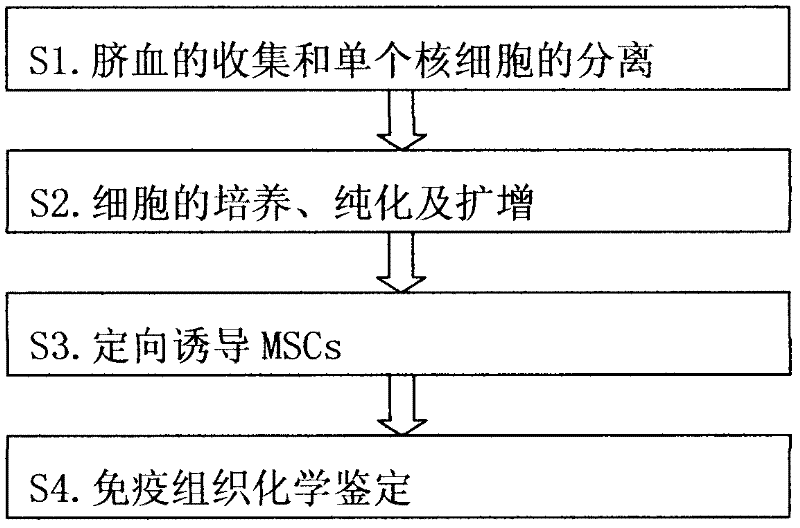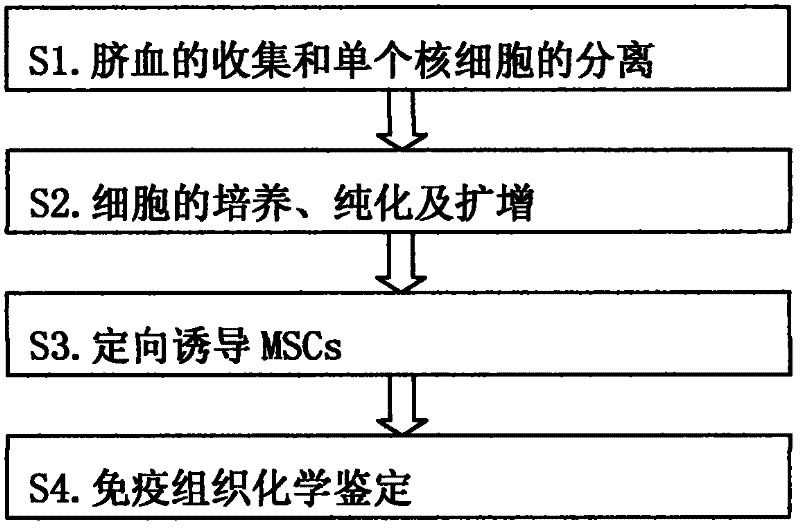Isolation and cultivation method of prokaryotic cells of human umbilical cord blood mesenchyme stem cells
A technology of mesenchymal stem cells and culture methods, applied in the field of nuclear cell isolation and culture, dimethyl sulfoxide induction process, can solve the problems of lack of utilization, ethical and moral restrictions, etc.
- Summary
- Abstract
- Description
- Claims
- Application Information
AI Technical Summary
Problems solved by technology
Method used
Image
Examples
Embodiment Construction
[0011] Such as figure 1 Shown is a flow chart of the steps of the dimethyl sulfoxide induction process of human umbilical cord blood mesenchymal stem cells differentiated into neuronal cells of the present invention, and the specific steps of the method of the embodiment are as follows:
[0012] S1. Collection of umbilical cord blood and isolation of mononuclear cells: 40-60ml of umbilical cord blood from normal full-term cesarean section fetuses was collected under sterile conditions, anticoagulated with heparin at a concentration of 20U / ml, and all samples were isolated within 12 hours after collection. Dilute and mix with Hank'S balanced salt solution 1:1, superimpose on the Feoll-Hypaque, the relative density is 1.0779 / L, the column height ratio of the diluted blood to the Feoll-Hypaque solution is 2:1, centrifuge at 2000r / min for 20min, Take the mononuclear cells in the interface layer, add Hank'S balanced salt solution to centrifuge, wash twice, add to the medium, adjust...
PUM
| Property | Measurement | Unit |
|---|---|---|
| Relative density | aaaaa | aaaaa |
Abstract
Description
Claims
Application Information
 Login to View More
Login to View More - R&D
- Intellectual Property
- Life Sciences
- Materials
- Tech Scout
- Unparalleled Data Quality
- Higher Quality Content
- 60% Fewer Hallucinations
Browse by: Latest US Patents, China's latest patents, Technical Efficacy Thesaurus, Application Domain, Technology Topic, Popular Technical Reports.
© 2025 PatSnap. All rights reserved.Legal|Privacy policy|Modern Slavery Act Transparency Statement|Sitemap|About US| Contact US: help@patsnap.com


